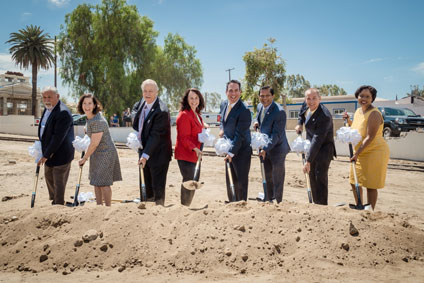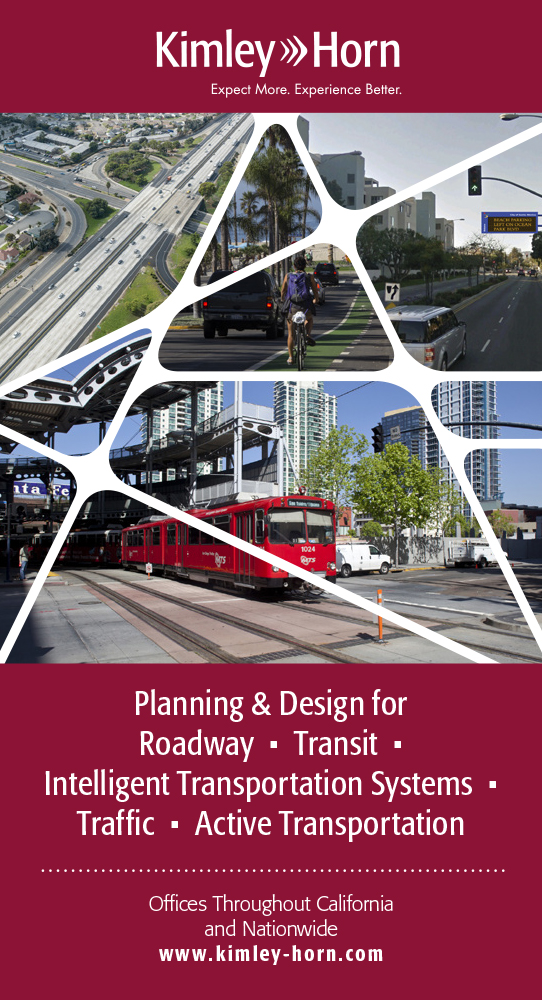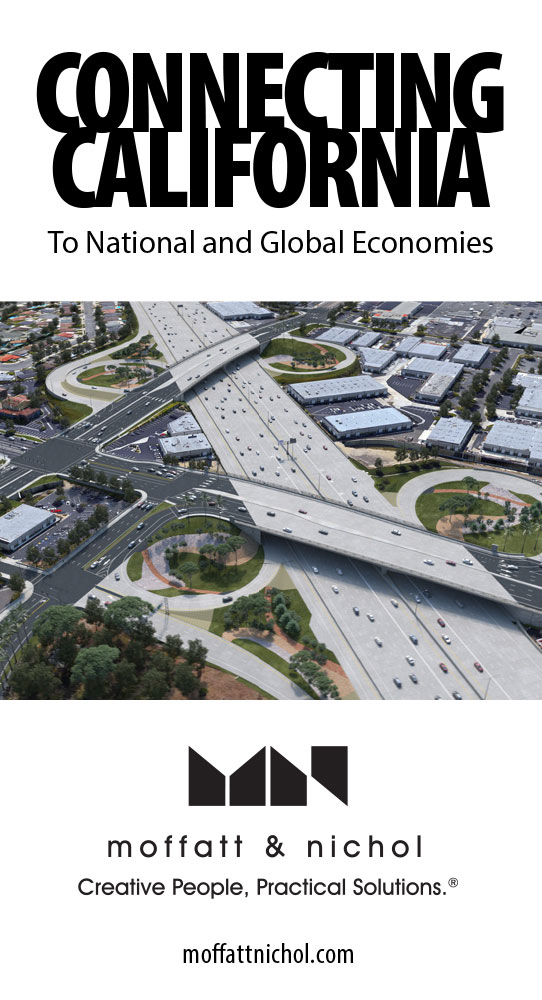Mobility 21 Summit Agenda Announced
The 2019 Mobility 21 Summit agenda is now available to view online! Click here to plan your day on Friday, Sept. 27 at the Disneyland Hotel:
- Choose from eight engaging breakout sessions
- Attend our not-to-be-missed general sessions
- Network with more than 100 exhibitors in our expo hall
- Reboot your mind (and cell phone!) in our Charge & Recharge Station with phone charging stations, seated massages and snacks to energize you throughout the day
AGENDA
7:30-8:45 a.m.: Registration Opens, Breakfast Served
8:45-10:15 a.m.: Opening General Session
10:15-10:45 a.m.: Morning Networking Break in Expo
10:45-11:45 a.m.: Morning Breakout Sessions
AM1: Chairmans’ Roundtable: Mobility Beyond the Limits
AM2: The Age of Information
AM3: Mobility on Demand
AM4: Getting to Zero
12-1:15 p.m.: Luncheon General Session
1:15-1:30 p.m.: 15 Minute Break
1:30-2:30 p.m.: Afternoon Breakout Sessions
PM1: Rising Above the Fray: 2020 State and Federal Priorities
PM2: Transportation Innovation: What Lies Ahead?
PM3: The Cost to Drive
PM4: Cracking the Code of Transit Ridership
2:30-3 p.m.: Afternoon Networking Break in Expo
3-4 p.m.: Closing General Session
4 p.m. Twilight Disneyland Tickets Available*
Twilight Disneyland Tickets
Click here to learn more about how eligible attendees can redeem a twilight Disneyland ticket or purchase discounted tickets.
Disneyland Hotel Room Block Nearly Sold Out
A special hotel room rate of $298/night (plus taxes and fees) is available to conference attendees on a first-come, first-served basis at the Disneyland Hotel. Hurry! The room block is almost sold out.
Mobility 21 Advisory Board Member Spotlight:
Steve Huff, PE
West Region Transportation Practice Leader
Michael Baker International
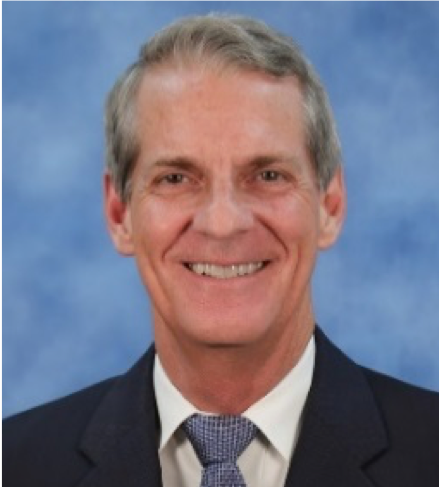 Steve Huff is Vice President and West Region Transportation Practice Leader for Michael Baker International (Michael Baker). In this role, he advances the practice while guiding more than 75 transportation professionals on projects ranging in size and complexity. During his 36-year career with the firm, Steve has enjoyed the opportunity to work on major assignments for clients such as OCTA, TCA, Metro, RCTC, SBCTA, and Caltrans – doing so while actively helping to develop the careers of many Michael Baker professionals through his mentorship.
Steve Huff is Vice President and West Region Transportation Practice Leader for Michael Baker International (Michael Baker). In this role, he advances the practice while guiding more than 75 transportation professionals on projects ranging in size and complexity. During his 36-year career with the firm, Steve has enjoyed the opportunity to work on major assignments for clients such as OCTA, TCA, Metro, RCTC, SBCTA, and Caltrans – doing so while actively helping to develop the careers of many Michael Baker professionals through his mentorship.
Based in Santa Ana (CA), Steve has spent more than three decades working with public- and private-sector clients to improve transportation infrastructure statewide. His experience has included the planning and design of major highway improvements and management of complex interstate freeway projects totaling more than $5 billion in construction cost.
Steve’s leadership in growing Michael Baker’s Transportation Practice is evident in his keen understanding of the ‘big picture’ while always maintaining focus on quality project delivery at the local level. One of his current initiatives is to expand the firm’s existing design-build capabilities into the West Region. In doing so, Steve successfully led Michael Baker’s efforts to win the I-10 Express Lanes Project with SBCTA. He shared, “This is an exciting time for our industry given the investments being made into new and rehabilitated infrastructure through local self-help county measures and funding initiatives such as SB-1. These programs, coupled with the ability of our public agencies and private sector to readily respond, are essential to providing safe and reliable transportation decades into the future. I am very encouraged by our industry’s exploration and integration of ITS-related technologies as part of project delivery.”
In addition to his role as an Advisory Board Member to Mobility 21, Steve is Co-Chairman of the Caltrans District 12 Professional Liaison Committee and a member of the Caltrans Statewide Professional Liaison Committee. He is also on the Board of Directors serving as Treasurer for ACEC (American Council of Engineering Companies) Los Angeles County Chapter, and an active member of WTS (Women’s Transportation Seminar).
Steve earned a bachelor’s degree in Civil Engineering from California State Polytechnic University, Pomona and is a registered civil engineer in California. He and his wife, Satomi, live in Orange County and have two daughters (19 and 15 years old).
Kimley-Horn delivers mobility solutions across Southern California.
Summit Platinum Sponsor Spotlight:
Kimley-Horn
![]() As one of the nation’s premier planning and design consulting firms, Kimley-Horn is proud to sponsor the 2019 Mobility 21 Summit. Kimley-Horn is a nationally-recognized industry leader creating sustainable transportation solutions for communities and regions, large and small. Whatever the scale, our dedicated team is focused on the partnerships necessary to establish effective and collaborative strategies. Our integrated planning process, mode integration strategies, and experience with local, regional, and statewide transportation planning and design positions us to offer our clients access to local experience and national expertise.
As one of the nation’s premier planning and design consulting firms, Kimley-Horn is proud to sponsor the 2019 Mobility 21 Summit. Kimley-Horn is a nationally-recognized industry leader creating sustainable transportation solutions for communities and regions, large and small. Whatever the scale, our dedicated team is focused on the partnerships necessary to establish effective and collaborative strategies. Our integrated planning process, mode integration strategies, and experience with local, regional, and statewide transportation planning and design positions us to offer our clients access to local experience and national expertise.
Kimley-Horn has a talented and dedicated workforce that is the foundation of the firm’s consistent recognition by Fortunemagazine as one of the “100 Best Companies to Work For” in the U.S. From our 12 California offices, we link transportation planning, technology, and design to help communities overcome challenges important to California’s cities and regions. Automated and connected vehicles working in concert with mass transit, active transportation, safe and efficient roadways, travel demand management, complete streets, and Kimley-Horn’s KITS Advanced Traffic Management System combine to create a recipe for future success. By leveraging our in-house expertise in these areas, our long-range solutions are providing more effective strategies for the future of mobility in California.
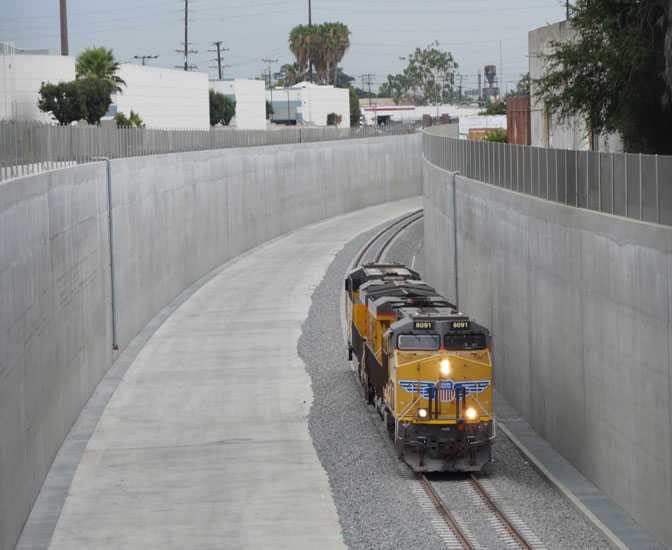
San Gabriel Valley Council of Governments, San Gabriel Trench
Summit Platinum Sponsor Spotlight:
Moffatt & Nichol
California Transportation: Mission Limitless
 For each generation of Californians, meeting transportation needs has meant going beyond the limits—from keeping up with the diverse needs of urban and suburban growth and the emergence of global supply chains.
For each generation of Californians, meeting transportation needs has meant going beyond the limits—from keeping up with the diverse needs of urban and suburban growth and the emergence of global supply chains.
At Moffatt & Nichol, we have been privileged to take part in taking on these challenges through creative design as California’s complex transportation systems have evolved and look forward to partnering in tomorrow’s innovations.
As a young firm in the late 1940s, projects large and small led to great things for Moffatt & Nichol—Navy work led to port work in San Pedro Bay, where Moffatt & Nichol played a leading role in developing containerized cargo facilities for Long Beach and Los Angeles ports and their tenants, and a street and railroad study for the Long Beach Harbor Department led to bridge design work. This set the stage for Moffatt & Nichol to become a double threat, with planning and engineering design specialists for transportation infrastructure on land and in the water—expertise applied to innovative projects, such as the San Francisco-Oakland Bay Bridge East Span Replacement and the Transbay Tube Retrofit in Northern California, and the multistate Heartland Corridor Rail PPP project in the U.S. Southeast.
Moffatt & Nichol is also proud to have played a significant role in landmark Southern California projects, such as the current I-405 Improvement Project (SR-73 to I-605), as well as the Alameda Corridor, San Gabriel Trench, Puente Avenue Grade Separation, and Montebello Corridor Grade Separation projects, which exemplify key elements in a connected transportation corridor that links our busy San Pedro Bay ports to the rest of the nation and the global economy.
At Moffatt & Nichol, we are excited about the future of California transportation and the limitless possibilities in creating innovative transportation infrastructure that connects California to national and global economies.
Metro Receives New Allocation of $100 Million From the Federal Transit Administration for Section Three of Purple Line Extension
Metro has received a new allocation of $100 million from the Federal Transit Administration (FTA) for the third and final section of the Metro Purple Line Extension Project to Westwood/VA Hospital.
The funding represents the second $100 million allocation from the FTA for Section Three since Nov. 2018 and comes from the FTA’s Fiscal Year 2019 Capital Investment Grants Program that invests in critical public transportation projects nationwide. It will go toward Metro’s existing Section Three tunneling contract, its stations, track and systems contract as well as advanced utility relocation work.
Metro staff has worked closely with the FTA to process ongoing federal requirements to fund this final portion of the project. Metro has requested $1.3 billion in funding through the FTA’s New Starts Program. The total cost for this section of the project is $3.6 billion. Metro anticipates a grant agreement will be forthcoming in the months ahead.
Two earlier subway extension sections have already received federal funding awards and are now under active construction.
Section Three of the Purple Line Extension will span 2.56 miles between Century City and Westwood/VA Hospital and will include two new subway stations. Section Three has already begun some construction activities, which includes utility relocation work and preconstruction activities. Both the second and third project sections are being built by Tutor Perini O&G, a Joint Venture. The entire nine-mile line is on track to open by 2027, in time for the 2028 L.A. Olympic and Paralympic Games in Los Angeles.
FTA has advanced funding for 25 new projects under the Capital Investments Grants Program since January 2017 totaling about $7.63 billion. Metro was one of only three city transit projects named by the FTA for this funding round.
Groundbreaking Held for
Redlands Passenger Rail Project
On Friday, July 19, the San Bernardino County Transportation Authority (SBCTA) held a public groundbreaking ceremony to celebrate the start of the mainline construction phase of the project.
Speaking on behalf of the project were elected officials including SBCTA President Darcy McNaboe, Congressman Pete Aguilar, Redlands Mayor Paul Foster and San Bernardino Council Member Henry Nickel. Other speakers included representatives from the Federal Transit Administration, California State Transportation Agency, Omnitrans and Metrolink.
The 9-mile Arrow Line corridor will connect Redlands with the San Bernardino Transit Center. The Transit Center currently has more than 1.5 million boardings per year that connect riders to Los Angeles, Orange County and beyond.
Additional information is available on the project website here.
Save the Date for Auto Club’s
Walk to End Distracted Driving
Please save the date for the second annual Auto Club Walk to End Distracted Driving. The event is part of their distracted driving initiative to get drivers to put down their phones, because lives depend on it.
This fun community event is designed to bring more awareness to distracted driving, which kills an average of 9 people and injuries over 1,000 every day in America.
The general public, AAA members and employees are all invited to walk on Saturday, Oct. 5 along the scenic Shoreline Marina in the City of Long Beach starting at 8:00 AM.
Breakfast will be served. Free parking will be provided. And lots of giveaways and prizes! Go to AAA.com/walk for more information and to register.
Registration for this event is required. The first 1,000 attendees to check-in at registration the day of the event will receive a free Aquarium of the Pacific ticket.

Olivia the Orange, one of the OC Fair’s mascots, steps off the OC Fair Express, which has been serving passengers, helping them get to the fair on weekends, since 2011. The service brought nearly 80,000 people to the fair last year, helping them avoid traffic congestion and taking cars off the road for cleaner air. Photo courtesy of OCTA.
OC Fair Express Returns to Help Fair-Goers Save Money, Avoid Traffic Congestion
The OC Fair Express bus service returned on July 13, part of the Orange County Transportation Authority’s ongoing effort to provide convenient non-stop travel to the OC Fair on weekends.
The express bus service provides direct service from nine locations to the OC Fair from approximately 10 a.m. to midnight on Saturdays and Sundays through the end of the fair’s run on Aug. 11.
Riders can save money and avoid traffic and parking hassles by using the OC Fair Express. Passengers are dropped off just feet from the entrance to the OC Fair.
Last year, nearly 80,000 riders took the express bus service, which helped them save time and money, while helping taking cars off the road, resulting in cleaner air.
Regular bus fare is only $2 each way, and riders will receive a coupon for $4 admission to the OC Fair – a savings of up to $10 off the regular ticket price. Riders ages 60 and older and those with disabilities ride for just 75 cents each way, and children 5 years and younger ride for free when accompanied by a paying adult.
Riders can also download the free OC Bus app to their mobile device to easily buy electronic tickets in advance and to check bus routes and schedules.
Five of the pickup locations connect directly from Metrolink passenger rail stations. Riders can use their valid Metrolink or Amtrak Pacific Surfliner passes from connecting trains to ride the OC Fair Express for free. Those rail transfers also receive the $4 fair admission coupon.
Riders of the OC Flex microtransit service also can connect to the OC Fair Express from Mission Viejo/Laguna Niguel and Huntington Beach.
Riders can catch the OC Fair Express at the following locations:
- Anaheim: Anaheim Regional Transportation Intermodal Center (ARTIC), 2626 E. Katella Ave.
- Anaheim:Anaheim Canyon Metrolink Station, 1039 N. Pacificenter Drive
- Fullerton:Fullerton Park-and-Ride, 3000 W. Orangethorpe Ave.
- Huntington Beach:Goldenwest Transportation Center, 7301 Center Ave.
- Irvine:Irvine Metrolink Station, 15215 Barranca Parkway
- Laguna Hills:Laguna Hills Transportation Center, 24282 Calle de los Caballeros
- Laguna Niguel: Laguna Niguel/Mission Viejo Metrolink Station,28200 Forbes Road
- Orange: The Village at Orange, 1500 E. Village Way
- Santa Ana:The Depot at Santa Ana, 1000 E. Santa Ana Blvd.
The OC Fair Express bus service has been transporting passengers directly to the OC Fair every year since 2011.
Over the years, the OC Fair Express has been funded in part by a grant from the Mobile Source Air Pollution Reduction Review Committee, and OCTA continues to pursue funding for the annual service. The committee provides subsidies for cleaner transportation alternatives.
For more information, visit www.ocfairexpress.com.
New 91 Express Lanes Transponders Coming Soon
Customers of the 91 Express Lanes should watch their mailboxes late this summer and fall – new sticker transponders will be on the way.
The state of California has changed the transponder technology that has been in place since the early 1990s. Toll facilities across the state are in the process of updating their toll systems and issuing new transponders to customers.
The 91 Express Lanes has been working since last fall to install the new technology in the lanes to prepare for this conversion and anticipates the toll system will be updated by the end of summer. During the installation, customers will continue to be notified of any lane closures. Shortly after the technology upgrades are completed, customers will begin receiving their new transponders by U.S. mail.
The new sticker transponders will replace the battery-operated, hard-case transponders currently in use. The stickers are smaller and less expensive to produce than the hard-case transponders.
Please note the following:
- 91 Express Lanes accountholders will receive a new small sticker transponder for each vehicle on their account. Customers will receive information prior to the mailing of the new transponders to remind them to update their vehicles.
- The new transponders will be accepted at all toll facilities across the state.
- During the transition to the new transponders, both the new and old transponders will be accepted.
- Users of express lanes that require a switchable transponder (Metro Express Lanes, Bay Area Express Lanes, soon to include the San Diego 15 Express Lanes), should continue to use their existing switchable transponder or request a switchable transponder.
- Customers with switchable transponders should mount both the new sticker and the switchable transponder on the interior windshield; instruction will be provided with the sticker. The toll systems will always use the transponder that provides the greater discount when charging a toll.
- The 91 Express Lanes will accept the old switchable and non-switchable transponders, and the new sticker transponders. A switchable transponder is not required on the 91 Express Lanes.
For questions about the new transponders or any other account information, please call the 91 Express Lanes Customer Service Center at 800-600-9191.
Footage of the Ventura County Sheriff’s Dive Team looking for explosives during the Coastal Trident exercise taken by drone from the Port’s Incident Command Center
Port Hosts 13th Annual Coastal Trident – State’s Largest Security & Emergency Response Exercise
Blasts, sirens blazing, helicopters circling above head, mock triage centers, simulated oil spills, and over 20 emergency and law enforcement agencies descended on the Port of Hueneme earlier this month for the state’s largest security and emergency response exercise – Coastal Trident.
“The Port’s Coastal Trident exercise is aimed to sharpen the collaborative response of our emergency and security teams to potential real-world disasters. Partnering with our local, state, and federal partners in these exercises allows us to share best practices, test lines of communication, and increase our overall preparedness,” said Oxnard Harbor District President Jess Herrera.
Coastal Trident encompasses a variety of exercises taking place throughout the region over a several week-long period and include over 150 local, state, and federal agencies. Today’s exercise focused on the response efforts and communication plans if an emergency were to occur at the Port of Hueneme.
At 9:30am, a mock explosion rattled the Port’s South Terminal kicking off the simulation. Actors portrayed bleeding and dying victims being rushed to the triage station set up on Wharf 2. Shortly after being notified, the following agencies responded to the scene and established a unified command:
- Port Hueneme Police
- Oxnard Police
- Oxnard Fire
- Oxnard Office of Emergency Services
- Oxnard Harbor District
- Ventura County Fire
- Fillmore Fire
- Ventura County Sheriff’s Department
- Ventura County Office of Emergency Services
- NBVC Dive Team
- Naval Construction Team One
- Ventura County Sheriff’s Bomb Squad
- Ventura County Emergency medical Services Agency
- Ventura County Sheriff’s Air Operations
- Lifeline Ambulance
- Ventura City Fire
- FBI Hazardous Evidence Response Team
- United States Coast Guard

Christina Birdsey, Port of Hueneme Chief Operations Officer, and Brendan Applegate, GT2’s Director of Threat Management, brief partner agencies on the schedule for the exercise
By 9:40am, the Port’s Incident Command Center was established at the 105 Security and Operations building. Members of Port management we joined by representatives from the various agencies involved along with their Public Information Officers at the Incident Command Center. To make it authentic, colored dye was used to show areas of oil and liquid fertilizer spilled during the explosion, draft press releases and social media posts were created, and phone calls from the public were responded to by the Port’s PIO. As the simulation unfolded, 31 mock casualties were reported and treated at the local triage center.

Firefighters tend to a mock victim at the triage center on Port
As reports came in from the dock, it was reported that the explosion was an act of domestic terrorism, complete with flyers depicting threatening messaging. The VC Sheriff’s Bomb Squad and Dive Team recovered two dummy deceased bodies and mock devices including a chemical spreading device, undetonated bomb, and a remote-controlled drone device. At 11:30am, the Port hosted a staged press briefing with the Mayor of Port Hueneme Will Berg and members of the press.

The Ventura County Fire Department’s Hazmat team and Ventura County Sheriff’s Department Bomb Squad identifying mock cyanide at the scene of the simulation
In review of the exercise, CEO & Port Director Kristin Decas stated, “Over the past few years, as our county has endured fires, floods, and mass shootings, we have learned that we can never be overprepared for an emergency situation. And, as we saw today, Coastal Trident is aimed to bring our local, state, and federal agencies together to improve our communication and cooperation with one another and the public.”
In addition to the public agencies involved, members of the innovation and tech community also observed the exercises to assist with developing any new technologies or products that would assist in real-world emergencies at the Port. These companies are a part of the Port’s Maritime Advanced Systems and Technology Lab (MAST) and aim to invent products for the maritime industry.

The scene of the simulated emergency taking place on Wharf 2 of the Port, including mock victims
At the outset of the exercise, the Port’s Chief Operating Officer Christina Birdsey explained, “We are excited to host our 13th annual regional maritime security exercise. The value in having many of our regional stakeholders involved in an exercise like this is that it allows for each of the agencies to not only test our plans, but to continue to learn from each of the participants and further improve our response abilities to security threats. Testing technology and better understanding potential gaps will only prove to grow innovation, improve communications and solidify partnerships.”






